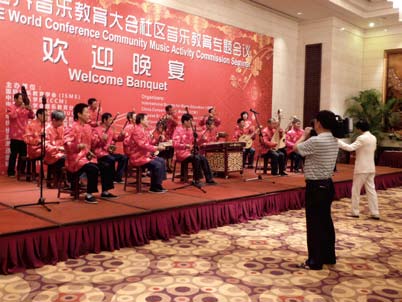
“Write a paper,” said my friend and colleague Dr. Dochy Lichtensztajn as we sat in the cafeteria of the Levinsky College of Music. “You have been a significant building block in the Kfar Saba music empire for the last 30 years,” she added. “Who better than you to write a paper on the subject?”
That was how my China adventure began. I had retired. My time was my own. I rose to the challenge and wrote an academic paper about the uniqueness of Kfar Saba’s expansive musical programs for the Community Music Activities (CMA) commission of the International Society for Music Education (ISME).
Feeling less than confident, I ran the paper by two friends (and steady contributors to ESRA Magazine), Judy Shapiro and Eric Moss, and after evaluating and incorporating their input, I sent it off to ISME. Four months later I received the email message that my paper was one of 25 which had been accepted for presentation at the 29th ISME World Conference in China in late July, 2010.
I collected photos, filmed videos and spent the next few months preparing a presentation which would somehow reflect Kfar Saba’s community music. How does one show, in a 20 minute audiovisual brief, 5,000 people of all ages making music, 10,000 others who cheer them on in the audience, children all over the city walking to school with their instruments, adults building their activities around a weekly band or choir rehearsal, a municipality which invests millions in an impressive new building to house the combined activities of the Conservatory and the Kfar Saba Music Foundation and numerous rehabilitative music programs functioning throughout the city? It was a challenge, but with the help of Yehuda David, a former colleague from Katzenelson High School, I was satisfied with the results.
With a Chinese visa, plane tickets and my presentation on a Flash Card (disc-on-key), a backup Flash Card and a back-up CD (just in case!), I met Dochy and another colleague, Dr. Shoshana Weich-Shahak, at Ben Gurion Airport to begin our Chinese adventure.
In Beijing, we collected our luggage and somehow found our way to the domestic airline which took us to Hangzhou, the venue for the CMA Commission Seminar, where we would all be presenting. We were met at the airport and were driven to a luxurious hotel which would be our home for the next five days. We were each given a canvas bag full of presents and information about the very intensive seminar we would begin after a good night’s rest.
The seminar was held on the 3rd floor of our hotel. The hall was decked out in celebratory décor – at each chair a folder, a sharpened pencil, a cup of tea, a bottle of water and a rolled up damp towel.
After an official welcome by our hosts, the Open University of China, the presentations began. Three half-hour presentations (20 minutes + a 10 minute discussion) then a break with tea/coffee, cakes and fruits, another two presentations – lunch – and back for another 3 + 2 presentations. The subjects ranged from musical practices in schools and communities in China, Brazil, Australia and India through the use of Capoeira to teach social behavior in public schools, ethnomusicological activities in South Africa and Japan, community music activities in England and Finland, a choir made up of community members together with prison inmates in a town in Iowa and more.
That first evening we had an extravagant welcome banquet accompanied by entertainment.
By the second day, the day of my presentation, I already felt comfortable with the 35 other delegates (there were also some 50 Chinese auditors) and was no longer nervous about presenting. The presentation was received warmly and the 10 minute discussion was filled with comments of amazement at the quality and quantity of Kfar Saba’s music.
Other than one afternoon’s organized outing, we saw very little of Hangzhou, being busy instead working on relevant and significant conclusions and recommendations regarding the future of worldwide community music activities for the ISME plenary meeting in Beijing.
We left the Hangzhou seminar good friends, knowing that once we got to the general ISME Conference in Beijing we would be waving to one another from afar as we blended in with the 4,000 delegates from around the world (3,000 Chinese and 1,000 from 65 other countries). Beijing was to be a totally different experience.
The 29th ISME World Conference was built around the theme of “Harmony and the World Future.” Our Chinese hosts - the China Conservatory, the Chinese Society for Music Education and the Nanchang University - regarded the conference as “the most important event in the global music education field … ‘the Olympics of music education’”, whose purpose was to promote the “harmonious development of the human society” through improving the quality of music education as a “contribution to human progress and prosperity.”
Everything about the conference was enormous. It took place in the Chinese National Convention Center, directly across the street from the Beijing Olympics sites, a building of four floors of lecture halls, auditoriums and classrooms, spacious lobbies (which hosted fancy cocktail parties, poster presentations and wagons for food and drinks for 4,000), escalators and elevators, shining floors, 600 Chinese volunteers (all dressed identically in turquoise shirts and white pants), lines of young Chinese policemen (apparently chosen for their height and good looks) and windows five meters high looking out on the flags of all the participating countries.
We were 12 Israeli delegates at the Beijing Conference, 3 Argentinians, 5 Anglo-Saxons and 4 Sabras, almost all Ph. D.’s … a large and prestigious delegation for such a small country!
At any given moment, one could choose from among 10 half-hour presentations, 8 hour-long workshops, 4 symposiums or panel discussions and myriad performances by musical ensembles from all over the world. It was mind-boggling. It meant that whenever we wanted to take some time to see the city we would be missing worlds of enlightening information. So we sat for several hours that first evening going through the program, each building a schedule and choosing the times we were willing to miss things in favor of sightseeing.
I did see the main tourist attractions. I rode on the immaculate subway. I made eye contact and shared mutual smiles with Chinese women my age also fanning themselves in the heat. I heard profound lectures and witnessed spectacular performances of the multifaceted Chinese culture. Mostly, I became an avid fan of ISME and its work around the world. I look forward to my next research project which will take me to the 30th World Conference in Greece in 2012. ISME…is me!
Sima Rolnick is the founder and retired chairwoman of the Katzenelson Music Department, a founding and active board member of the Kfar Saba Music Foundation and the coauthor of a new textbook in Music Theory for High School Students.
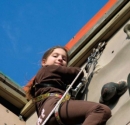 DEAR EDITOR 157 MAGAZINE
DEAR EDITOR 157 MAGAZINE COUNTING ON INFERENCE
COUNTING ON INFERENCE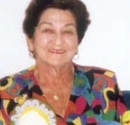 SHULAMIT LAMIE RAVINSKY 1925-2010
SHULAMIT LAMIE RAVINSKY 1925-2010 Art from the Heart
Art from the Heart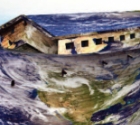 Jewish Art Returns to Jerusalem
Jewish Art Returns to Jerusalem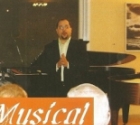 Musical Treats
Musical Treats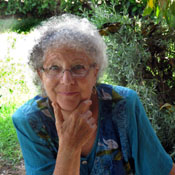 Sima Rolnick
Sima Rolnick